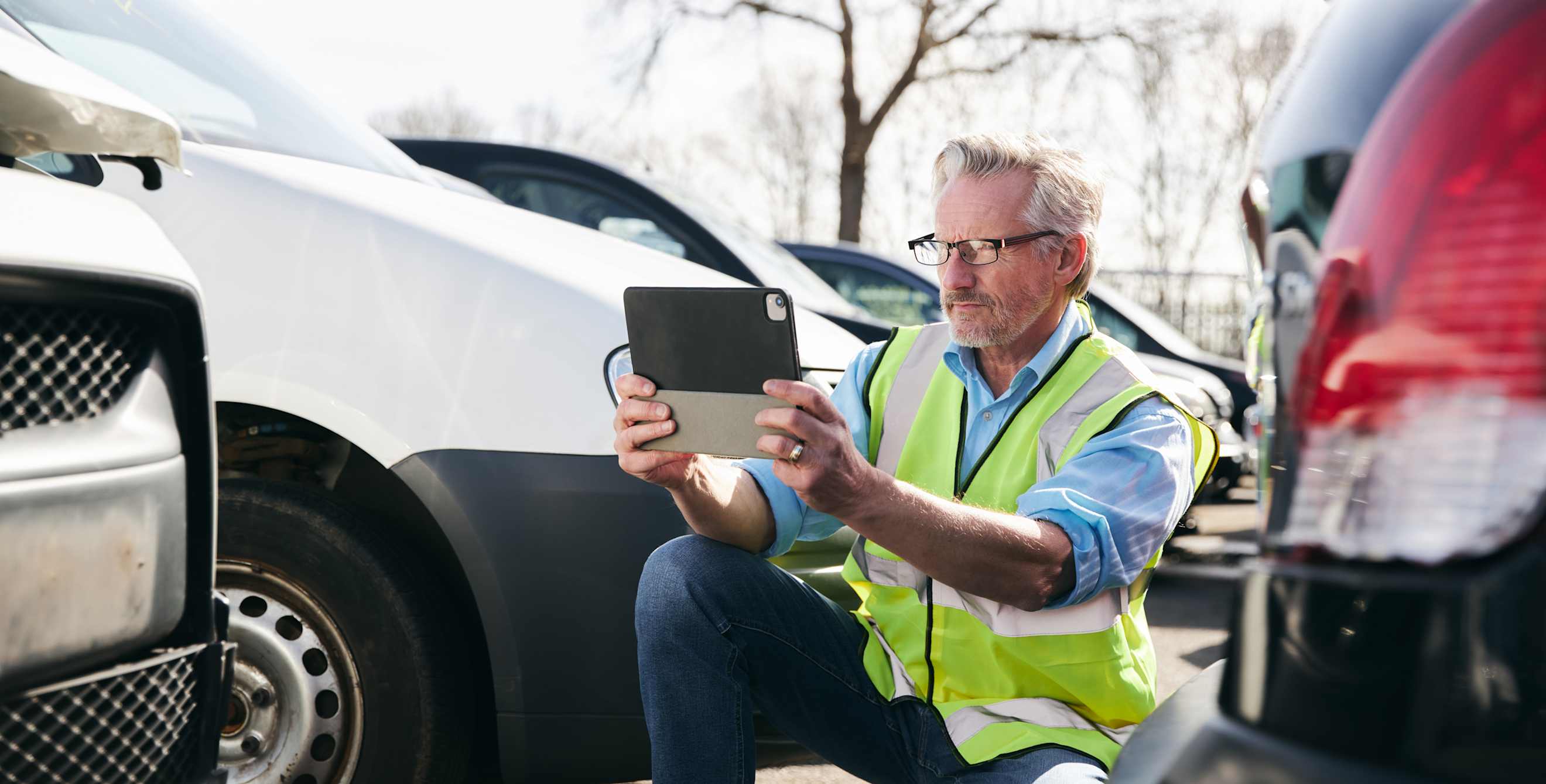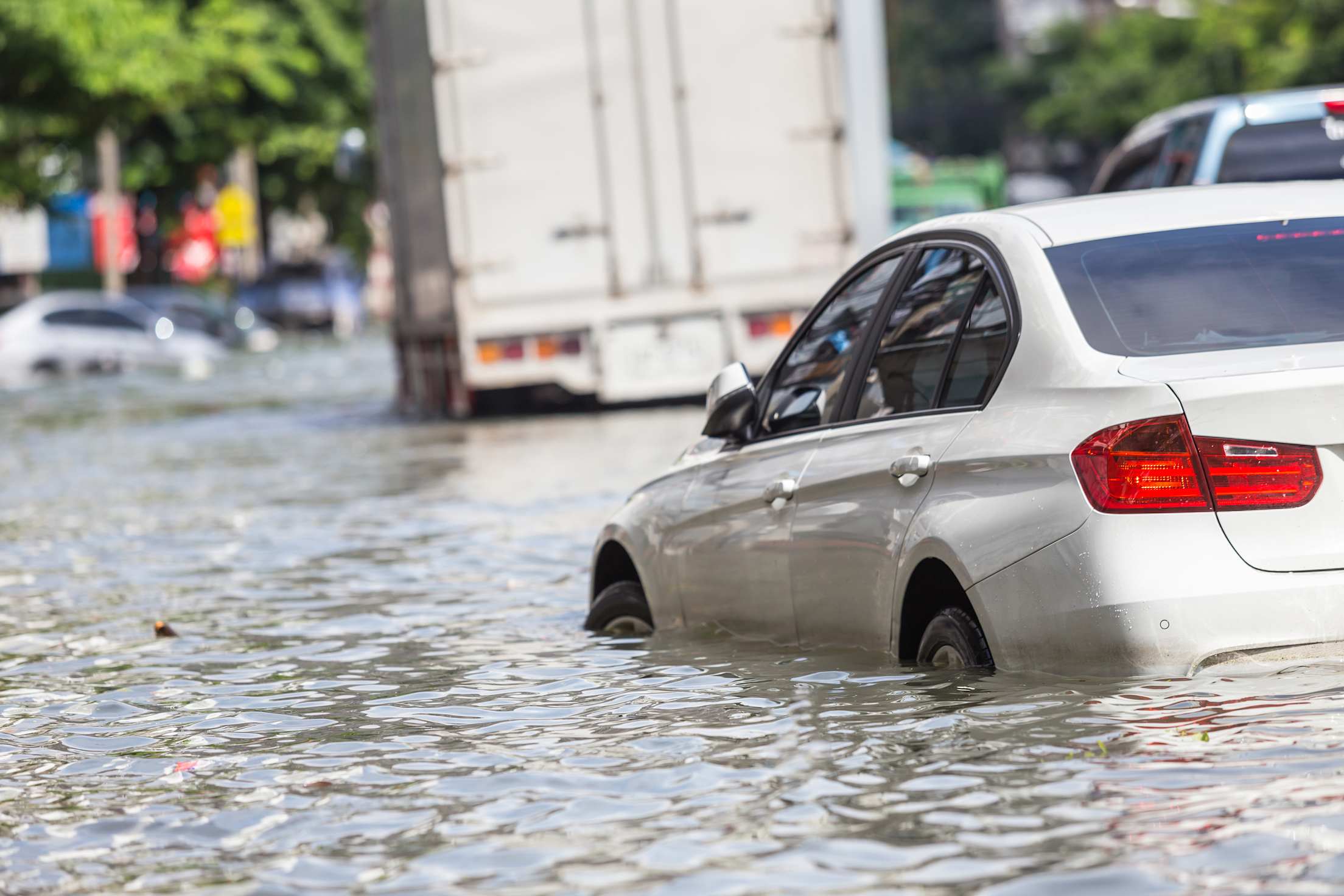
What to do if Your Car has Flood Damage
And why insurance is so essential.

A car that endures a flood will never be the same.
When a car gets flooded, its warranty is voided, says automotive expert and ASE-certified technician Lauren Fix. “It’s as if you took your computer and dumped it in the pool.” Manufacturers can tell the car has been soaked, and flooding is a massive issue that impacts the vehicle’s ability to function.
“Basically, if your car's flooded, even kind of a minor flood, it's a big problem,” Fix says.
Maybe you’re thinking: This is a problem for people in hurricane zones. But rising waters can occur anywhere, including from a deluge in a county under drought restrictions or due to a burst pipe in a parking garage.
Here’s what you need to know about flooding and your vehicle.
Prevention is your best bet.
Sometimes flood waters are unavoidable, falling into the “act of God” category.
But there are some simple steps you can take to limit the chances of having your car undergo these conditions—for instance, you can make sure you have alerts about weather enabled on your phone. That way, you can make an effort to park on top of a hill or in a spot that should be safe and dry.
Another key preventative tactic: get comprehensive car insurance.
While most states require drivers to have liability insurance, comprehensive coverage—which covers damage to your car from factors outside of collisions, spanning from theft to riots to natural disasters—is an add-on. That said, most drivers—79 percent—do purchase this coverage, per the Insurance Information Institute.

If your car is flooded, start with photos.
Step one: Take a breath, Fix recommends. Then grab a camera: “Always take pictures to see the water levels,” Fix says. If you can safely take pictures without entering the flood waters, take photos only from the exterior of the car, Fix advises. Don't open the door if the water is above the sill at the bottom of the car door. Otherwise, water will flood in, causing more damage, Fix says.
If you aren’t with your vehicle or you can’t access it safely, wait until the waters have receded and flood danger has passed before taking pictures of the high-water marks on the vehicle. This documentation will be helpful as you file a claim with your insurance company.
Once the water recedes completely, you can open the doors and air out the car.
Next, call your insurance company—or a mechanic.
If you have comprehensive coverage, your car will be covered for flood damage. A very likely next step, Fix says, is that the insurance company will total the car, take the vehicle, and flag it as having gone through a flood so it won’t go back on the market.
These actions point to just how damaging water is to the car’s engine, computer parts, and electrical system.
“Water is an enemy of electrical systems,” Fix says. And in a modern car, this system controls everything from your ability to unlock the car to rolling down the window to the automatic braking system. Some of the water-caused concerns throughout the car might not be visible to the naked eye. It could, for instance, damage safety features such as airbags or collision-avoidance systems, Fix says.
Water is also hard on your car’s interior. Wet fabric can lead to mold and mildew.
If you do not have insurance coverage, Fix recommends getting the vehicle towed to a repair shop, where an auto mechanic can assess it. Be prepared for bad news: It’s quite likely that the costs to repair the vehicle will outstrip the value of the vehicle, Fix says. If that’s the case, your best option is likely to see if you can sell your car to a dealer (who will auction it off) or to a salvage yard, Fix says. “A salvage yard will buy any totaled car,” Fix says—that’s because they can disassemble the vehicle and sell the parts, from wheels to glass, she notes.
Smart Tip: Do not start your car right after it’s been through a flood. If there’s water in the engine, turning it on can cause more damage.
Buying used? Beware of "title washing."
Cars that have been through a flood should have that information flagged on the vehicle’s title. But title washing—when a car is sold from state to state and retitled to remove the flood damage or totaled stamp or marking in states with lax regulations—is a growing and common problem.
Follow these tips to avoid purchasing a flood-damaged car, including giving the vehicle a sniff test for the telltale odor of mold and mildew, getting a report on the vehicle, and more.